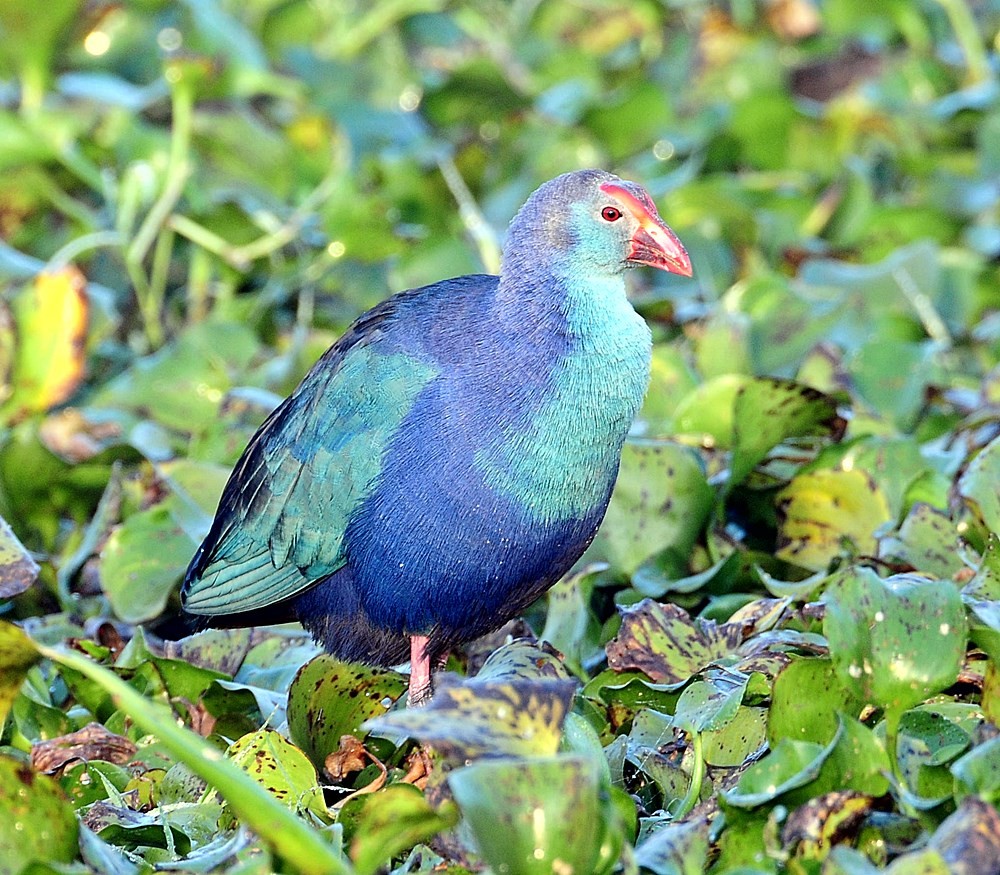Western Swamphen
A species of Swamphens, Also known as Western Purple Swamphen Scientific name : Porphyrio porphyrio Genus : Swamphens
Western Swamphen, A species of Swamphens
Also known as:
Western Purple Swamphen
Botanical name: Porphyrio porphyrio
Genus: Swamphens
Content
Description People often ask General Info
Description
The western swamphen (Porphyrio porphyrio) is a swamphen in the rail family Rallidae, one of the six species of purple swamphen. From the French name talève sultane, it is also known as the sultana bird. This chicken-sized bird, with its large feet, bright plumage and red bill and frontal shield is easily recognisable in its native range. It used to be considered the nominate subspecies of the purple swamphen, but is now recognised as a separate species. The western swamphen is found in wetlands in Spain (where the largest population lives), Portugal, southeastern France, Italy (Sardinia and Sicily) and northwestern Africa (Morocco, Algeria and Tunisia). 
Size
50 cm
Colors
Green
Red
Gray
Blue
Purple
Life Expectancy
9-22 years
Nest Placement
Ground
Feeding Habits
Western Swamphen forage in wetlands, feasting on tender vegetation, shoots, and aquatic creatures, including eggs, ducklings, small fish, snails, and perhaps eels. Uniquely, western Swamphen may use their foot to handle food, displaying adaptability that extends to urban settings.
Habitat
Western Swamphen typically resides in diverse wetland habitats across temperate to tropical regions. They favor areas such as lakes, ponds, marshes, swamps, and slow-flowing rivers with lush vegetation including reeds, sedges, and waterlilies. These habitats are usually permanent, but western Swamphen also occupies seasonal and temporary wetlands. They are adaptable and can be found near man-made structures like dams, sewage farms, and urban lakes. Additionally, western Swamphen extends into surrounding open areas such as grasslands, agricultural lands, and parklands.
Dite type
Omnivorous
People often ask
General Info
Feeding Habits
Bird food type
Behavior
The species makes loud, quick, bleating and hooting calls which are hardly bird-like in tone. It is particularly noisy during the breeding season. Despite being clumsy in flight, it can fly long distances and is a good swimmer, especially for a bird without webbed feet. 
Species Status
Today the western swamphen is locally common, with the largest population in Spain. It was formerly listed as "Rare" by the European Union, but has been delisted to "Localised". The species declined drastically in the first half of the 20th century due to habitat loss and hunting. It was relatively widespread until 1900, but by the 1960s it was seriously threatened and its range in the Iberian Peninsula was limited to a few locations in the Guadalquivir basin. 
